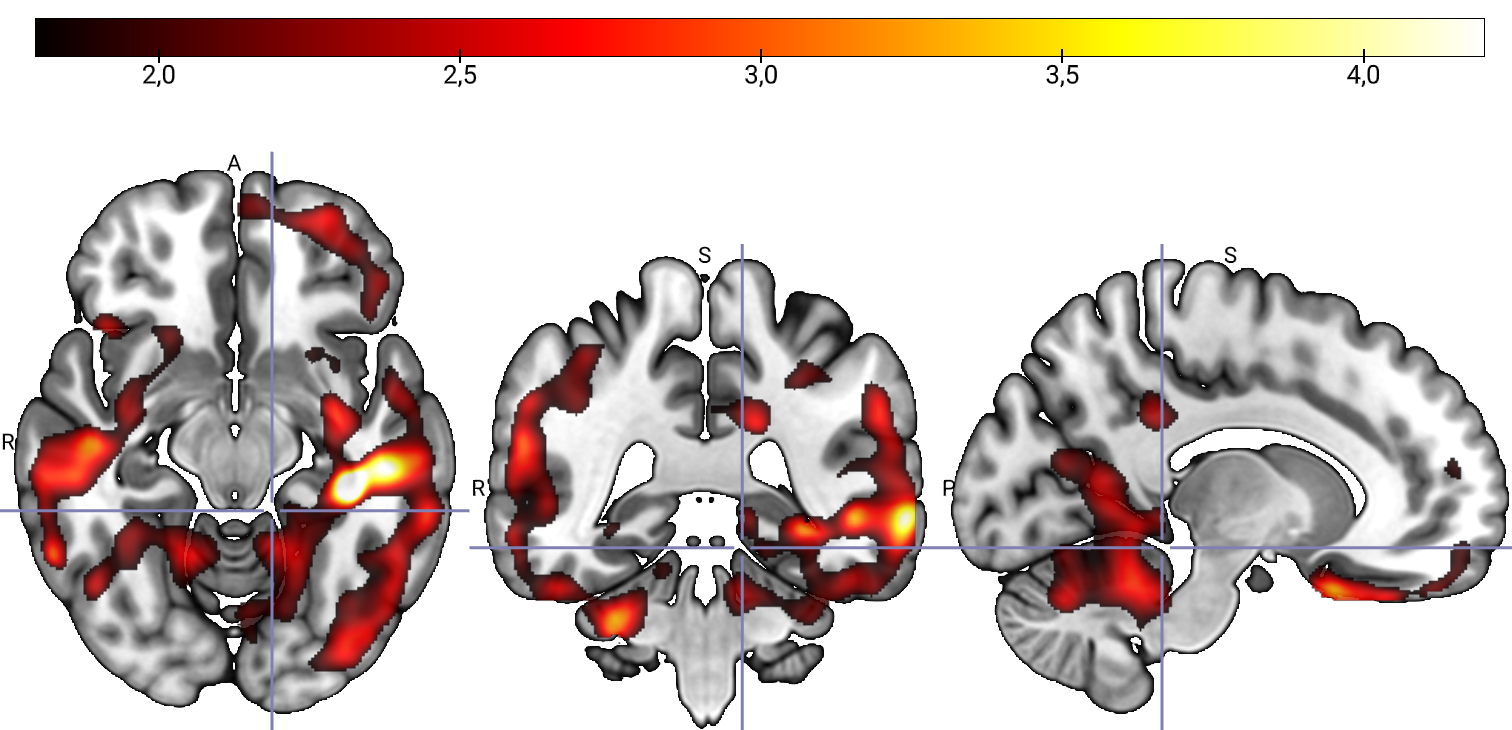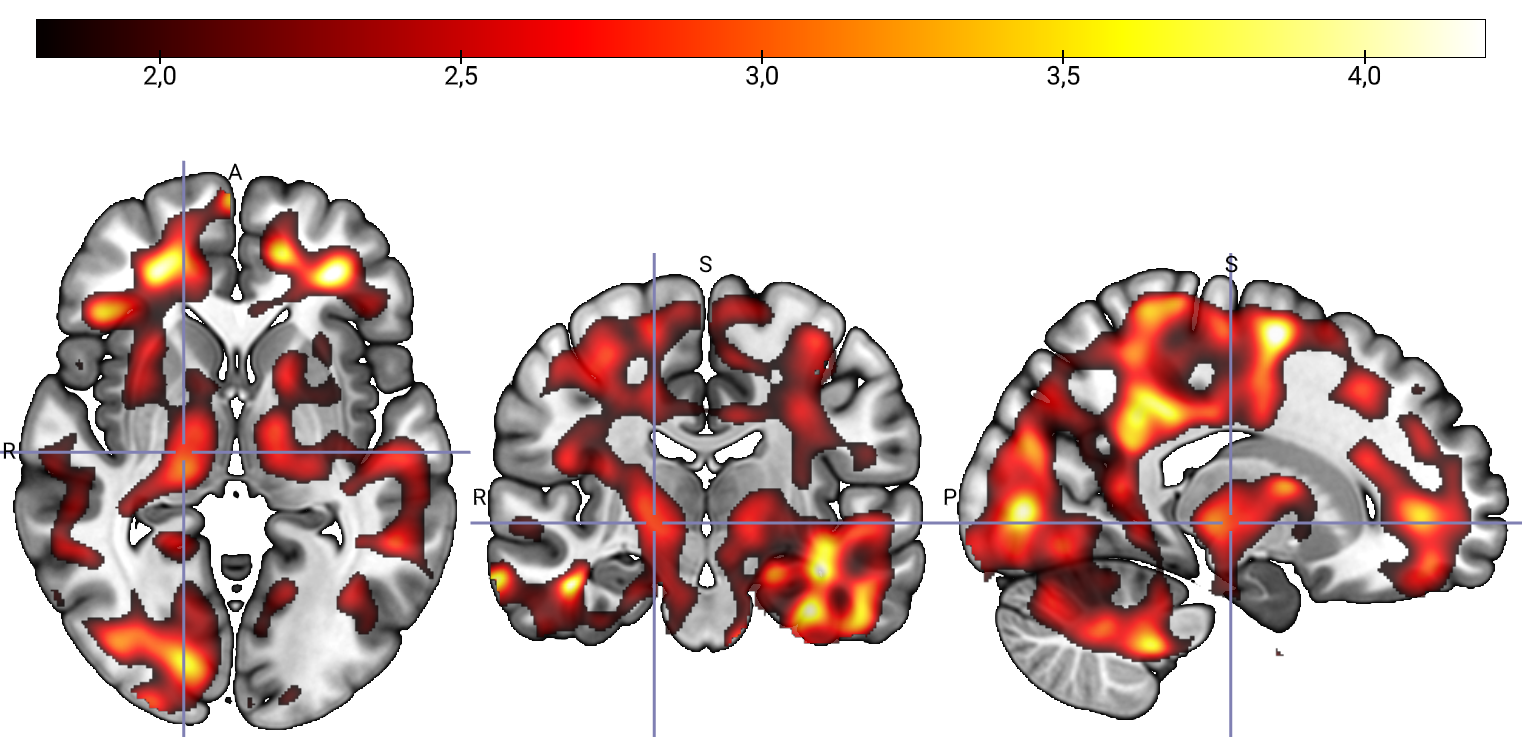Category: Parkinson's Disease: Neuroimaging
Objective: To explore the relationship between cannabinoid receptor type 1 (CB1) availability and motor symptoms in Parkinson’s disease (PD) with [18F]FMPEP-d2 positron emission tomography (PET).
Background: Motor features of PD are heterogeneous, and postural instability and gait disorder (PIGD) symptoms have been particularly associated with worse prognosis. However, the pathophysiology behind the different motor subtypes is still unclear.
Method: The subject sample consisted of 15 individuals with PD (7 females, 8 males; mean age 65.7 ± 6.4 years, mean disease duration 9.6 ± 5.3 years). All participants underwent a [18F]FMPEP-d2 High Resolution Research Tomograph PET examination in OFF stage for the quantitative assessment of cerebral binding to CB1 receptors. The Unified Parkinson’s Disease Rating Scale motor part (UPDRS-III) was used to evaluate the motor symptoms in OFF stage. Subscores were constructed for rigidity (sum of items 22a-e), body bradykinesia (item 31), tremor (sum of items 20a-e and 21a-b), and a composite of gait (item 29) and postural instability (item 30). Multiple regression design in SPM12 software was used to evaluate the association between [18F]FMPEP-d2 binding and motor symptom scores, with age and sex as covariates. Before statistical analyses, images were flipped so that the right hemisphere corresponds to the contralateral to the most affected body side and the left to the ipsilateral side. All results were corrected for multiple comparisons by using false discovery rate (FDR) at p < 0.05.
Results: A statistically significant negative correlation was observed between [18F]FMPEP-d2 binding and composite score of gait and postural instability (p = 0.002) as well as rigidity subscore (p < 0.001). Both clusters were located widespread over both hemispheres covering several areas of temporal, parietal and frontal lobes, cerebellum, and white matter. In terms of rigidity, also several areas of occipital lobe, thalamus, and basal ganglia were included. In contrast, tremor or bradykinesia subscore, or UPDRS-III total score did not correlate to [18F]FMPEP-d2 binding.
Conclusion: Gait and postural instability and rigidity are associated with decreased CB1 availability unlike tremor or bradykinesia.
To cite this abstract in AMA style:
R. Ajalin, H. Al-Abdulrasul, J. Tuisku, J. Hirvonen, S. Lahdenpohja, J. Rinne, A. Brück. Non-tremor motor dysfunction in Parkinson’s disease is associated with decreased [18F]FMPEP-d2 binding [abstract]. Mov Disord. 2023; 38 (suppl 1). https://www.mdsabstracts.org/abstract/non-tremor-motor-dysfunction-in-parkinsons-disease-is-associated-with-decreased-18ffmpep-d2-binding/. Accessed December 31, 2025.« Back to 2023 International Congress
MDS Abstracts - https://www.mdsabstracts.org/abstract/non-tremor-motor-dysfunction-in-parkinsons-disease-is-associated-with-decreased-18ffmpep-d2-binding/


